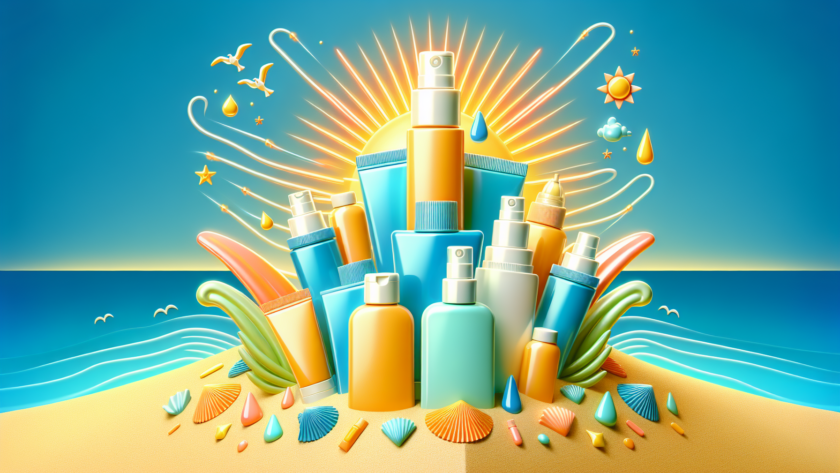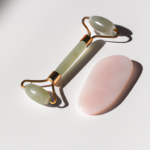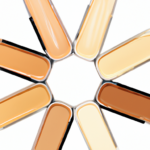You’ve probably heard about the importance of wearing sunscreen to protect your skin from the harmful effects of the sun’s rays. But what if one layer of sunscreen isn’t enough? Can you layer sunscreens to boost your protection? In this article, we’ll explore whether it’s possible and effective to stack up multiple layers of sunscreen to safeguard your skin from sun damage. So, before you head out under the scorching sun, let’s find out if layering sunscreens is a smart move or just a futile effort.
Can I Layer Sunscreens?
When it comes to protecting your skin from the harmful effects of the sun, layering sunscreens can provide an extra level of defense. By using multiple sunscreens, you can increase the overall sun protection factor (SPF) and ensure broad-spectrum coverage. But how does sunscreen layering work, and what are the benefits? In this article, we will explore the ins and outs of layering sunscreens, offer tips for effective application, address possible concerns, and even provide alternatives to sunscreen layering.
Understanding Sunscreen Layering
Why layering sunscreens?
Layering sunscreens allows you to customize your sun protection routine to suit your needs. Different sunscreens offer varying levels of protection against both UVA and UVB rays, and layering different types of sunscreens can provide broad-spectrum coverage. Additionally, since sunscreen should be reapplied every two hours, layering allows you to maintain continuous protection throughout the day, even if you’re sweating or swimming.
How does sunscreen layering work?
When you layer sunscreens, you are essentially combining their SPF values to achieve a higher level of protection. For example, if you apply a sunscreen with SPF 30 and then another sunscreen with SPF 15, the overall SPF would be 45 (30 + 15). However, it is important to note that the increase in SPF is not linear. The additional protection is not proportional to the sum of the SPF values, which is why it is recommended to choose sunscreens with higher SPFs when layering.
Benefits of layering sunscreens
One of the main benefits of sunscreen layering is the increased protection against both UVA and UVB rays. By using different types of sunscreens with different active ingredients, you can ensure that your skin is shielded from a wider range of UV rays. Additionally, layering sunscreens can provide more even coverage and reduce the risk of missed spots. This is especially important for those with sensitive or easily burned skin.
Choosing the Right Sunscreens
Types of sunscreens
Before we dive into the specifics of sunscreen layering, it’s important to understand the different types of sunscreens available. There are two main types: chemical sunscreens and physical sunscreens. Chemical sunscreens work by absorbing UV radiation and converting it into heat, while physical sunscreens create a physical barrier that reflects and scatters UV rays.
SPF and Broad-spectrum protection
When choosing sunscreens for layering, it’s essential to consider their SPF values and whether they provide broad-spectrum protection. SPF measures the sunscreen’s effectiveness in protecting against UVB rays, which are responsible for sunburns. Look for sunscreens labeled with “broad-spectrum,” as they protect against both UVA and UVB rays. UVA rays can cause skin aging and contribute to skin cancer.
Compatibility and formulation
To ensure the effectiveness of sunscreen layering, it’s crucial to choose sunscreens that are compatible with each other. Some sunscreen ingredients may interact negatively, compromising their efficacy. Additionally, consider the formulation of the sunscreens, as some may be too thick or greasy when layered. Opt for lightweight and non-comedogenic formulas that can comfortably layer on the skin without clogging pores.
Applying Sunscreens for Layering
Preparation
Before applying sunscreens for layering, it’s important to prepare your skin. Start with a clean face, gently exfoliating if necessary, and moisturize to ensure a smooth canvas for application. Allow the moisturizer to fully absorb before moving on to sunscreen.
Order of application
To effectively layer sunscreens, the order of application is crucial. As a general rule, start with a physical sunscreen as a base to create a protective barrier. Physical sunscreens work by reflecting UV rays and are less likely to be compromised by chemical sunscreens. Then, layer a chemical sunscreen on top for added protection. This combination ensures both broad-spectrum coverage and enhanced overall SPF.
Amount and coverage
To achieve the advertised SPF, it’s essential to apply an adequate amount of sunscreen. The general recommendation is to use about a nickel-sized amount for the face and a shot glass worth for the body. Additionally, make sure to cover all exposed areas of your skin, including often neglected areas such as the ears, back of the neck, and tops of the feet.
Possible Concerns with Sunscreen Layering
Effectiveness of layering
While sunscreen layering can provide additional protection, it’s important to note that layering alone does not guarantee complete sun protection. The overall effectiveness still depends on the quality and proper application of the individual sunscreens used. Ensure that each sunscreen you choose provides sufficient protection and apply them correctly following the recommended guidelines.
Interactions between ingredients
Some sunscreen ingredients may interact negatively when layered, reducing their effectiveness. For example, certain chemical filters may degrade or become less stable when combined with certain physical filters. It’s essential to check the compatibility of the ingredients in the sunscreens you plan to layer. Consider consulting a dermatologist or performing a patch test if you’re unsure how certain ingredients may interact.
Potential product instability
Certain combinations of sunscreens may lead to product instability, causing texture or formulation issues. For example, layering two water-resistant sunscreens may result in a sticky or greasy texture that is uncomfortable to wear. To avoid such problems, look for sunscreens that are specifically formulated for layering or consult with a skincare professional for recommendations.
Tips for Effective Sunscreen Layering
Consistency in formulation
To ensure compatibility and enhance the effectiveness of sunscreen layering, it’s advisable to use sunscreens from the same brand or with similar formulations. This reduces the risk of ingredient interactions and improves the overall texture and wearability of the layered sunscreen combination.
Wait times between layers
Allowing each layer of sunscreen to fully dry and absorb into the skin before applying the next layer is essential for effective layering. This typically takes a few minutes. Patience is crucial to ensure that each sunscreen can provide its intended level of protection without compromising the effectiveness of other layers.
Reapplication and touch-ups
Remember that sunscreen layering does not eliminate the need for reapplication. Sunscreens should be reapplied every two hours or immediately after swimming or excessive sweating. When reapplying, ensure that the new layer of sunscreen is compatible with the existing layers to avoid any adverse reactions.
Alternatives to Sunscreen Layering
Physical barriers like clothing and hats
If you’re not a fan of sunscreen layering or simply prefer alternative methods of sun protection, physical barriers like clothing and hats can provide reliable protection against the sun’s harmful rays. Opt for clothing with a tight weave and a wide-brimmed hat to shield your face and neck from direct sun exposure.
Sun-protective makeup and powder
For those who enjoy wearing makeup, incorporating sun-protective makeup and powder into your routine can be a great alternative to sunscreen layering. Many cosmetic brands offer products with added SPF, providing a layer of protection while enhancing your natural beauty. However, keep in mind that these products alone might not provide sufficient protection, so consider them as a complement to your sunscreen routine.
UV-protective accessories
If you spend a significant amount of time outdoors, consider investing in UV-protective accessories such as sunglasses and UV-blocking umbrellas. These accessories offer an extra layer of defense against the sun’s rays and can be particularly useful in high-intensity sun exposure situations.
Conclusion
In conclusion, layering sunscreens can be an effective strategy to enhance your sun protection routine. By combining different sunscreens with varying SPF values and active ingredients, you can achieve broad-spectrum coverage and increase overall sun protection. However, be cautious about ingredient interactions, product stability, and proper application. If you’re unsure about sunscreen layering, there are alternatives like physical barriers, sun-protective makeup, and UV-protective accessories. Remember, protecting your skin from the sun is essential for maintaining its health and preventing skin damage, so find the sun protection method that works best for you and enjoy the outdoors safely.




